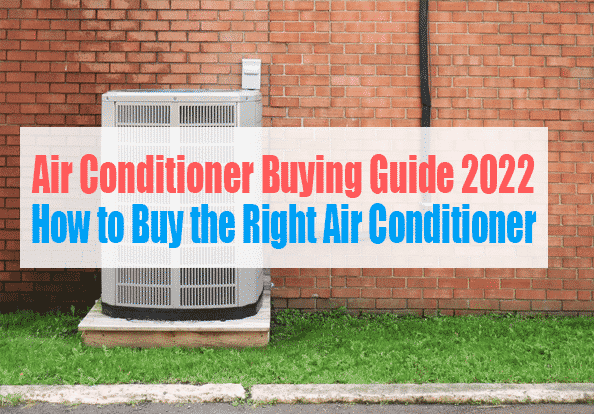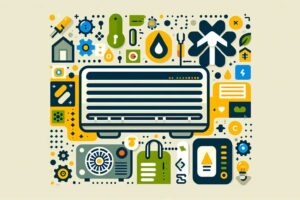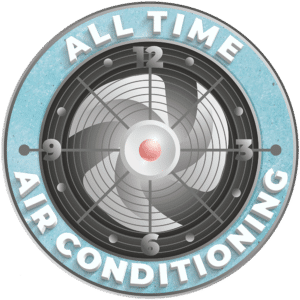Central Air Conditioning Buyers Guide
Is good to consider having your central air conditioner replaced or installing an entirely new system in early spring. It can be a significant expense, so it is crucial to get things done right.
Our guide will help you select the best AC system for your house and keep it maintained properly to get the best possible performance and longest life. We will also be sharing some tips with you on how to find a great HVAC (heating, ventilating, and air conditioning) technician to perform the work.
Members of Consumer Reports can view our ratings on the most reliable brands of ducted ACs, based on the survey data that we collected on nearly 24,000 AC units used in the real world that were purchased and installed from 2005 through 2020. Our survey findings predict that around 36 percent of all central AC systems will experience problems during the first eight years of owning the system, so it is essential to choose a reliable brand. (We also learned through our survey which brand owners have a tendency to be the most satisfied, which parks break the most frequently, and the cost of repairs
(We do not have central air conditioning system performance ratings. It isn’t practical to test them since there are so many different variables, including the design and size of the home, the ductwork construction, and the way the system was installed.
New Central Air Conditioning Features
Suppose it’s been a while since you purchased a central AC (a majority of AC units last for ten years at least). In that case, you will discover that today’s models are a lot more energy-efficient. This means running them costs less money while keeping you comfortable and relaxed.
Compared to a decade ago, ductless air conditioners are more affordable and common. They can be a good option if you plan to retrofit a permanent air conditioning system onto a home (or part of a house) without ductwork. The following is additional information on the differences between ductless and ducted air conditioners.
Central Air Conditioning
Genuine central air conditioning systems use ducts for distributing cooled air throughout a home. The most common design, a split system, has a refrigerant that circulates between the indoor coil and the same brand or a matching outside condenser with a compressor. The refrigerant cools the air and, in the process, dehumidifies it as well. Air is circulated through ducts located throughout the house by a blower. The thermostat maintains the temperature in the setting that you choose.
Split Ductless Systems
This type of system has an outside compressor and condenser, along with one to four or even more air handlers or indoor blower units, which are mounted high up on the wall for distributing air. A thin conduit connects the outdoor and indoor sections and houses the condensate drain, refrigerant tubing, and power cable. The conduit runs through a 3-inch hole behind each of the air handlers. Each of the air handlers cools down the room where it is installed, and remote control can be used to set the temperature. It is recommended that you have your system professionally installed. Although they are not technically central air, they are a lot more efficient and quieter compared to portable ACs or window ACs. They can also be a much more affordable and more accessible option compared to having a natural central air system installed.
Consider Using A Heat Pump
Another thing that you can consider is using an air-source heat pump instead of an AC-only system. Heat pumps can provide both cooling and heating. They work the same way as air conditioners when they are in cooling mode. And when the cold weather comes, they are the most energy-efficient type of system to heat your home.
For decades, they have been commonly used in warm areas of the U.S.. Still, there are now many air-source heat pumps available that can provide all or most of the heating needs of a home, even in colder climates. A heat pump can also be used in combination with a supplementary or existing heating system. It can be set up by an installer so that most of the time, the heat pump operates, but whenever the outside temperature drops below a specific threshold, heat pumps are not as practical as another system – like a gas-fired furnace can kick in instead. ( A good rule of thumb for the threshold is around 20° F. However, depending on the system, the cutoff could be much colder or a bit warmer.)
Heat pumps come in both ductless and ducted versions. (Some ductless air conditioners actually are heat pumps). They tend to be a bit more expensive than AC-only units but cost less than the combined expenses of a new cooling and heating system. Due to how energy-efficient heat pumps are, tax incentives or cash rebates are being offered by some state governments to homeowners who have air-source heat pumps installed. Sometimes that makes them the most affordable option for home cooling and heating. For more, refer to our heat pump buying guide.
How Air Conditioners Work
Air conditioners transfer heat from the interior of a home to the outside in order to provide the home with cooling.
Keep The Ducts Lined Up
If you are having an AC system installed from scratch, the size of the cooling equipment that you need should be calculated by your contractor employing recognized methods like those that can be found inside the Residential Load Calculation Manual or Manual J, provided by the ACCA (Air Conditioning Contractors of America).
If your house has ductwork already, but it is the first AC system that you are installing, be aware that the ducts that are used for heating may not be in the right location or be the right size for optimal cooling. It is important for your contractor to make sure that the duct sections are the right size and that you have a sufficient number of supply registers to deliver enough air to all of the right places. The ductwork that is undersized can make the operation noisy and inefficient.
It is also a good idea to ensure that the ducts are insulated and sealed. Otherwise, air may escape, which can waste 20 to 30 percent of the energy used for running your system. When your ducts are sealed, they will keep you warmer during the winter and cooler during the summer.
Important Factors When Selecting Your Central AC System
Size or Capacity
Size is a synonym for the cooling capacity of an air conditioner. It is measured in tons or British thermal units (Btu) per hour. One ton of cooling is the equivalent of 12,000 Btu/hour. The Energy Star website has rough sizing guidance that you can use. However, the best thing that can be done is for your contractor to conduct a load calculation using a recognized method like the one in the ACCA’s Manual J.
It is essential to choose the proper AC capacity based on the size of your house. If a unit is too small, it is going to struggle with keeping your house comfortable. A unit that is oversize is going to be more expensive to buy and (unless it is a model that has a variable-speed compressor) is going to cycle off and on more frequently than it needs to, which will stress the components and struggle with controlling your home’s humidity.
If your central air needs to be replaced, check into whether or not the same size system is needed as the old unit or if it can be shrunk down some. Any changes that you make to improve the energy efficiency of your home, like adding insulation or upgrading the windows, can lower your cooling needs. If you have added rooms, on the other hand, you may need to have more cooling.
Efficiency
This refers to the amount of cooling that is delivered by the unit for every watt of electricity. SEER or seasonal energy efficiency is used to express efficiency. The higher the SEER is, the higher the efficiency is. A higher-SEER AC will tend to be more expensive. However, over time, they frequently pay for themselves through reduced energy expenses. The minimum SEER that is allowed today in the U.S. for new split system air conditioners is 14. This is 20 percent more efficient, at least compared to minimum-efficiency models that were made 10 years ago. To meet the Energy Star efficiency guidelines, systems need to have a minimum of 15 SEER. The most efficient models go up to 26 SEER.
Noise
Based on our reader survey, the feature that best predicts the overall satisfaction of owners with their air conditioners is quiet operation. Noise levels are published by manufacturers for their products across various fan speeds and outdoor temperatures and measured in decibels. Lower ratings are better, especially when an AC is being installed close to a bedroom window.
Reliability
The second-best predictor for the overall satisfaction of an owner with their air conditioner is reliability (this is connected with how fast it cools the room down, although that has more to do with whether or not it is maintained properly and whether or no the A is the right sie for your house).
Important Central AC Maintenance Information
For optimal performance, Central AC systems need to have regular maintenance. When negotiating an installation, it is worthwhile to negotiate a service plan where regular inspections are combined with discounted repair prices along with a labor warranty included in the overall price. The price for these services varies widely.
You will want the service technician to handle the following: Once a year, the coils should be cleaned and flushed, drain the drainage system and pan, and vacuum out the blower compartments. Also, the contractor should check to ensure that the system is charged properly with refrigerants, without any leaks, and that all of the mechanical components work correctly.
Some maintenance tasks you can do yourself. Clean the filters and grilles once a month. Clear dirt and debris from the condenser coils and also check the drainpipe for blockages. Follow the recommendations from the AC manufacturer on how to change the filter and how often it should be changed. Generally speaking, thicker disposable filters need to be changed less often. (The HVAC filters we tested lasted from three to 12 months.)
Other Details That Should Be Considered: When your programmable or smart thermostat is set at the proper temperature, your cooling costs can be reduced by around 10 percent. The correct temperature will depend on what your comfort level is, but you can begin by setting it to 78° F and then experimenting until the sweet spot is found. The Department of Energy reports that you can save around 3 percent on your utility bills for each degree that you increase the set temperature on your central air system. Also, be aware that using a ceiling or box fan, which does not cost a lot to operate, can help you feel 3 to 4 degrees cooler.
Outdoor spacing: In order to operate correctly, the compressor needs to have sufficient airflow. So be sure to maintain 2 to 3 feet of space, at least between any structures or plants and the unit. Also, there should be 5 feet of clearance, at least between the trees overhead and the top part of the unit. There should also be enough space for a technician o you to service and access the unit. Local buildings may have regulations regarding how near an outdoor compressor can be from the neighbor’s property line or window.
Find the Best Contractor For Your Home
Whether you are installing your first air conditioner or need to replace an old one, the most important thing is to find a reliable contractor who can install and service your air conditioning system. Here are the steps you should take:
Ask around. Try to get referrals from business associates, family, or neighbors. It is a good idea to get price quotes from three contractors at least.
Check the contractor’s background. Any contractors bidding on your installation need to be able to show you verification of any contractor’s licenses that are required, along with insurance and bonding.
You can always rely on All Time Air Conditioning to get the job done professionally. Operating out of florida for almost 20 years, it has grown to be one of the most prominent and trusted air conditioning companies in the greated palm beach county area.









Leave a Reply
Your email is safe with us.